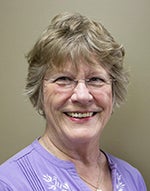Memories: The long legacy of the Naeve family
Published 8:45 pm Friday, December 22, 2023
|
Getting your Trinity Audio player ready...
|
Memories by Bev Jackson Cotter
Dorathea Soth Naeve’s life was filled with happiness, sadness, resilience and generosity. She was a child when her family emigrated from Germany and orphaned shortly after their arrival. Yet she left a legacy to Albert Lea that will live on.
In the mid 19th century, there was a large wave of German immigrants to the U.S. coming from crop failures, famine and the cholera epidemic. The Johann and Henrietta Soth family was a part of that wave. In 1849, with their three children, Dorathea age 8, Bertha, 6, and Charles, 3, the Soths moved to Watertown, Wisconsin, where, soon after their arrival, both parents died of the cholera and Bertha drowned. Orphaned Dorathea and Charles went to live with an aunt and uncle on their farm. Dorathea finished school at age 14 and worked in Milwaukee for a number of years until she moved to Waterloo, Iowa, to keep house for her brother who was in the mercantile store business with Theodore Naeve. In 1873 they moved to Albert Lea and opened Naeve, Soth & Co., a general store. They also branched off into a successful money lending business.
In 1875 Dorathea and Theodore Naeve were married and built a home on the corner of Water Street and West Avenue. In 1889 they built a large and elegant Victorian-style home on Fountain Street between Park and Grove Avenues. It was described as “one of the finest in the city.”
In 1890 they adopted Edith Goskeson, a 4-year-old Danish immigrant, whose mother had recently passed away, and then only a year later Theodore died. Dorathea and Edith lived in their beautiful home on Fountain Street until 1906 when they moved to Minneapolis so Edith could attend the university. Only two years later, Dorathea died after being struck by a horse while crossing Nicollet Avenue.
Why was Albert Lea’s first hospital named after the Naeve family?
In 1896, the Albert Lea City Hospital Association was organized using the Dr. H. Wilcox home for hospital purposes, and a short time later local physicians joined together to establish a hospital in the rear of Dr. J. Von Berg’s home. In 1905, the City and County Hospital Association was organized but it had no tangible assets.
Prior to her death in 1908, Dorathea Naeve had stipulated in her will that their home on Fountain Street, valued at $10,000, would be given to the association for use as a hospital. Only a year after she passed, her brother Charles Soth, now an officer in the Brundin Meat Packing Co., died in an elevator accident, leaving $5,000 to the hospital association. With these assets, the association successfully completed a campaign to raise $30,000, the Naeve home was moved a block west and sold, and the first modern Albert Lea hospital, accommodating 40 patients, was built on the original Naeve home site. It opened in 1912. In 1923 the building expanded to the north, in 1946 to the west, and in 1975 a new hospital was built overlooking Fountain Lake.
In 1973, Mrs. Edith Naeve Kranebell, their adopted daughter now living in Texas, sent a $1,000 donation to the new hospital building fund. In the accompanying note, she expressed the pride her mother would feel in the expansion and usefulness of the medical facility.
One of the definitions of legacy is setting an example for others and to guide their futures. What an incredible legacy we have received from the Naeve family.
Bev Jackson Cotter is an Albert Lea resident.



